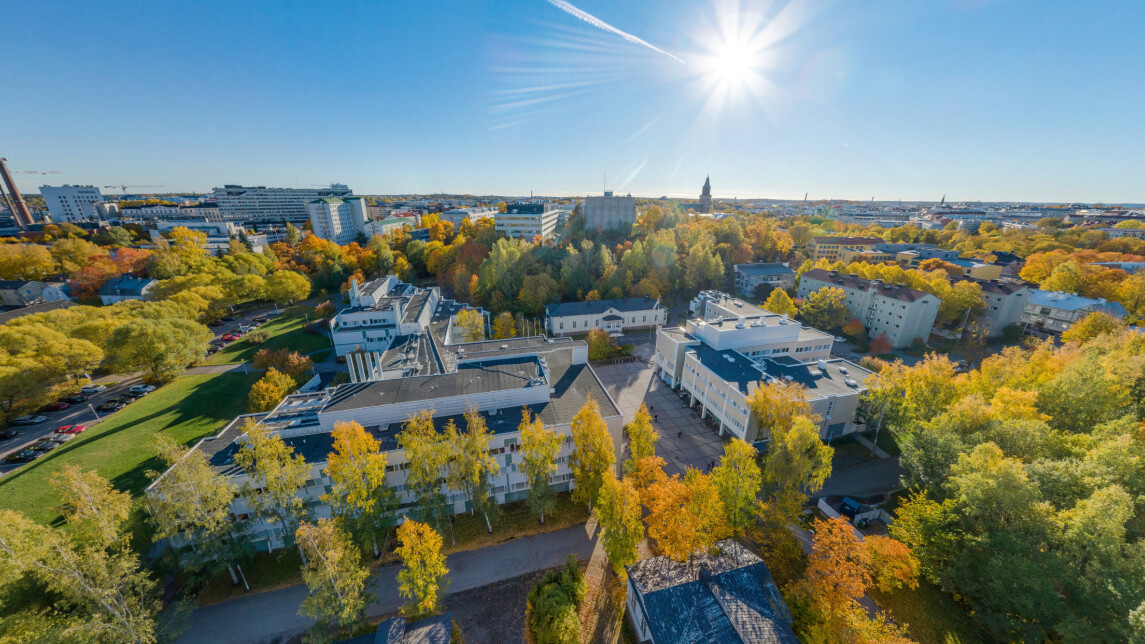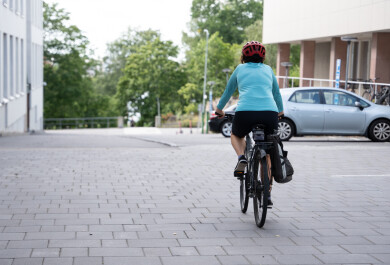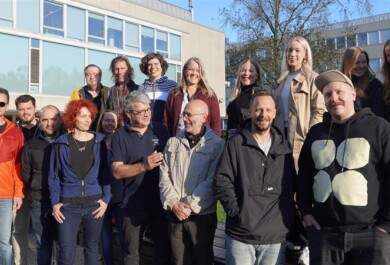The University of Turku has estimated its carbon footprint already for the third time. The carbon footprint of 2020 was 10,500 tCO2 which was about half of the total of the previous year. The reduced emissions were due to the decrease in work commuting as well as the University Properties of Finland Ltd compensating the carbon footprint of their properties.
The overall carbon footprint of the University of Turku was 23,140 tCO2 in 2018 and a little less in 2019 at 21,680 tCO2. During these years, the carbon footprint mainly consisted of three fairly similar factors: travel, properties and research activities.
When compared to the previous years, the carbon footprint of 2020 was significantly low, circa 10,500 tCO2. In the carbon footprint of last year, the relative shares of the emission sources also changed as the shares of travel and properties dropped to a bit over a tenth of the University’s overall carbon footprint. The carbon footprint of research, then again, increased a little and composed 65 percent of the emissions in 2020.
Carbon Footprint of Premises Reduced Significantly
The carbon footprint of the University's premises in 2020 was circa 1,220 tCO2, whereas in 2019, it was circa 7,000 tCO2. The emissions of premises reduced significantly after the University Properties of Finland Ltd began compensating their emissions. This has resulted in the premises being carbon neutral.
– The University Properties of Finland Ltd is by far the biggest lessor, making this drop in emissions notable for the University. If the University Properties of Finland Ltd did not compensate its emissions, the carbon footprint of the premises we have rented would have been circa 3,750 tCO2 last year, making the total share of premises circa 4,970 tCO2, says Chair of the working group responsible for calculating the carbon footprint, Vice Rector Kalle-Antti Suominen.
In addition to the emission compensations by the University Properties of Finland Ltd, the mild winter of 2020 as well the changes promoting sustainable development in the industry had an impact on the decrease in the carbon footprint of the properties.
– Our emission factor per square metre decreased between 2019 and 2020 by circa a fourth. This is mostly due to the share of district heat: Turku Energia has decreased the share of carbon considerably and increased the recovery and utilisation of waste heat, continues Vice Rector Suominen.
Coronavirus Situation Reflected in the Commute Carbon Footprint
In 2018 and 2019, the annual carbon footprint of travel was a bit over 7,200 tCO2. However, due to the coronavirus situation, the carbon footprint of travel dropped significantly. In 2020, travel emissions were in fact only 1,350 tCO2.
Not until we find out the carbon footprint of 2022, will we be able to evaluate how permanently the operational culture of universities and science community changes for the part of travel. For example, congresses will most likely continue to be organised with remote connections in the future, even when the coronavirus situation gets better.
– On the other hand, it is important to remember that science is by default international and will therefore always require some travel. In the experimental disciplines, travel is often related to researchers travelling to another laboratory to learn a new method which they will then take back to their home university. This learning that is important for the expertise of researchers and renewal of research is often impossible remotely, emphasises sustainable development Project Manager Marjaana Suorsa.
Coronavirus Situation Did Not Affect Research Carbon Footprint
The exceptional circumstances caused by the coronavirus situation did not have an impact on the carbon footprint of research. In fact, the carbon footprint of research equipment as well as laboratory chemicals and equipment increased a little compared to the previous years.
The carbon footprint of research was estimated on the basis of costs.
– The increase in the research carbon footprint, on the other hand, reveals that we have been successful in strengthening our research by procuring new, up-to-date research equipment. Even though research creates a significant share of our carbon footprint, it also has a big carbon handprint. With the research work conducted in our laboratories, we are promoting, for instance, the development of clean energy solutions, reminds Vice Rector Suominen.
The University of Turku continues to monitor its carbon footprint annually. The goal is to also develop a calculation method and specify the results that have so far remained rather rough due to the cost-based estimation. The development work is carried out in collaboration with other universities.
Towards a Carbon Neutral University of Turku
Sustainable development is one of the core themes of the University's new Strategy and Policy Programme. As part of the extensive work to promote sustainable development, the University has committed to become carbon neutral by the end 2025. In addition to reducing the carbon footprint, compensation of emissions will also be required.
– Climate change is a serious global challenge for which we at the University of Turku also take responsibility. We are currently mapping different options to compensate our carbon footprint. Our goal is to find an open, transparent and research-based method, says Vice Rector Mika Hannula, who is the chair of the Steering Group for Sustainable Development.
The University of Turku is also committed to the sustainable development goals published by the Universities Finland UNIFI at the end of last year. A national goal is that all Finnish universities reach carbon neutrality in 2030.






